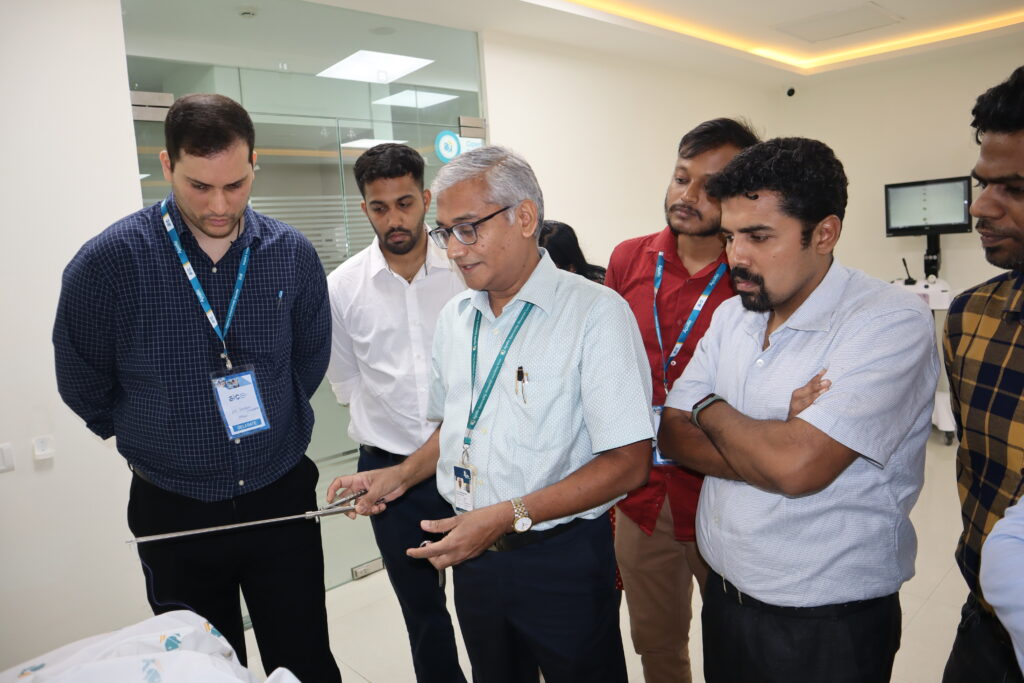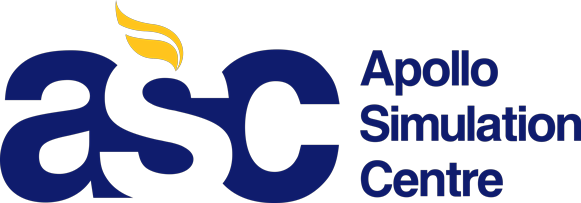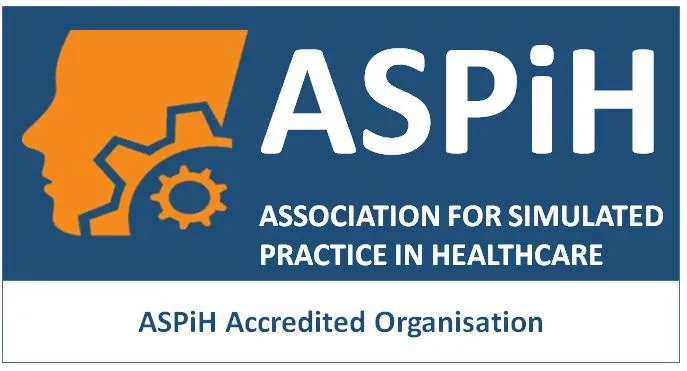MAS has reformed surgical practices around the world for the past two decades by providing less invasive surgery, quicker recovery, and better outcomes to the patients. Among various MAS procedures, the ones related to the upper gastrointestinal tract are unique in their own right due to complexity and the potential to dramatically affect quality of life. The intricacy of an upper GI thus requires advanced technical skills but also specialized training. The Advanced Minimal Access Upper GI Surgery (aMAS Upper GI) at ASC, Chennai, is the pioneering course for surgeons in building competence.
The following article provides an overview of minimal access surgery in upper GI procedures, challenges and benefits of these techniques, and how the innovative training program offered by the ASC bridges the gap between theoretical knowledge and clinical practice.

Importance of Minimally Invasive Surgery in Upper Gastro Intestinal Conditions
MAS has revived the management of upper GI pathologies like GERD, achalasia, esophageal cancer, and obesity.
Why choose Minimal Access surgery?
- Lesser trauma: Smaller incisions have lesser tissue trauma and are less painful.
- Recovery could be faster: Patients have shorter hospital stays and a quicker return to daily activity.
- Better cosmetic outcomes is possible because there is minimal scarring compared to open surgeries.
- Precision is also easily achievable as the advanced visualization tools enable surgeons to perform with higher precision.
However, MAS procedures of the upper GI tract demands much expertise as the anatomy is very intricate and situated near the vital organs of the heart, lungs, and major vessels. This type of training is particularly a highly quality oriented training.
Common MAS Upper GI Procedures and Their Techniques
- Laparoscopic Fundoplication
Indication: GERD and hiatal hernia.
Procedure: The upper portion of the stomach is wrapped around the esophagus in order to prevent acid reflux. Techniques include Nissen (360°) or partial fundoplications.
Key Skills: Suturing precisely, judicious use of energy devices.
- Laparoscopic Heller Myotomy
Indication: Achalasia cardia-a condition that has hard swallowing.
Procedure: This is usually done with a partial fundoplication where an esophageal muscle longitudinal incision is performed to relieve pressure.
Challenges: Providing adequate muscle relaxation without causing mucosal injury.
- Laparoscopic Esophagectomy
Indication: Esophageal cancer or Barrett’s esophagus.
Procedure: A portion of the esophagus that is diseased is removed, and reconstruction is done by using the stomach or intestine.
Special Considerations: Combination of thoracoscopic and laparoscopic approaches for optimum outcome.
- Laparoscopic Gastrectomy
Indication: cancer of the stomach or peptic ulcer disease.
Procedure: Surgical removal of stomach partially or totally, and reconstruction by Roux-en-Y or Billroth techniques.
Key Steps: Lymph node dissection and creation of anastomosis.
- Laparoscopic Gastric Bypass
Indication: Morbid obesity with comorbidities.
Procedure: The stomach is divided into a small pouch that is then directly connected to the small intestine, bypassing most of the stomach and duodenal.
Outcome: Successful weight loss and metabolic improvements.
Challenges in Upper GI MAS: The Role of Training
Despite its advantages, upper GI MAS poses challenges:
- Complex anatomy: The location of the upper GI tract requires very precise navigation and dissection.
- Steep learning curve: Advanced expertise is usually needed for procedures such as esophagectomy.
- Complication management: Surgeons have to foresee and treat such complications as anastomotic leaks or intraoperative bleeding.
These challenges outline the need for structured training programs, such as the aMAS Upper GI course at Apollo Simulation Centre, which prepares surgeons for these complexities with confidence.
aMAS Upper GI Program at Apollo Simulation Centre: Knowledge to Practice
The aMAS Upper GI program provides an appropriately tailored curriculum that establishes advanced MAS techniques in surgeons. The combination of theoretical knowledge, simulation-based, and practical knowledge imparted in the course will enable the participants with the competency to handle several upper GI surgeries.
Program Highlights:
- All-inclusive Curriculum:
o Online Modules: Basic knowledge of laparoscopic instruments, ergonomic principles, energy devices, and troubleshooting through online interactive lectures.
Contact Course: a three-day intensive workshop emphasizing practical skills has the following format: 70% of the time devoted to hands-on training by attendees and 30% by faculty demonstrations.
- State-of-the-art Simulations:
o Participants practice on 3D-printed anatomical models and advanced laparoscopic tools, simulating real-life surgical scenarios.
o Wet lab sessions provide hands-on experience for complicated procedures such as gastric stapling and fundoplication.
- Expert Faculty:
The course instructors include highly qualified and famous surgeons like Dr. Prasanna Kumar Reddy, Dr. Muralidharan M., and Dr. Raj Palaniappan, who have several decades of experience in surgical gastroenterology.
- Assessment and Certification:
Participants undergo thorough assessment via OSCEs, where their competency and knowledge are put to the test before being certified.
A Glimpse of the Training
Day 1: This shall provide the fundamentals of MAS.
- Morning: Familiarization with the instrument, ergonomic principles, and access techniques for esophagectomy.
- Afternoon: Practical exercises in dissection and suturing, complemented with panel discussions on thoracoscopic approaches.
Day 2: Advanced Techniques
- Morning: Intracorporeal suturing and stapling techniques.
- Afternoon: Simulation-based training in fundoplication, gastric stapling, and gastroenterostomy.
Day 3: Live Surgery and Evaluation
- Morning: Live surgeries or wet lab sessions to put into practice the skills learnt.
- Afternoon: OSCE assessment and feedback, concluding with certification.
Training and Technology Transform Surgical Practice
Technological advancements are integral to MAS, enabling greater precision and safety. Key innovations include:
- 3D Imaging: Improved visualization enhances depth perception and builds accuracy.
- Robotic Assistance: Platforms such as da Vinci provide superior dexterity during complex procedures.
- Energy Devices: Ultrasonic and electrosurgical tools provide sharp dissection with minimal blood loss.
By integrating these tools into training, the aMAS Upper GI program gives surgeons the confidence to adopt MAS techniques.
Impact on Patient Care and Outcomes
Surgeons who are more confident and have better training in advanced MAS techniques tend to provide patients with:
- Faster recovery and reduction in post-operative pain.
- Fewer complications such as infections and wound dehiscence.
- Improved long-term outcomes in conditions such as GERD, achalasia, and obesity.
An added emphasis on simulation-based learning can be assured to translate to real improvement in the care of patients, since surgeons can apply the skills they acquire in an effective way.
Conclusion
Minimally invasive surgery of the upper GI has been a cornerstone in modern surgical practice, conferring unparalleled benefits on both patients and surgeons. However, such complexity demands rigorous training. The aMAS Upper GI program at the Apollo Simulation Centre represents excellence in surgical education, bringing together state-of-the-art technology, mentorship by experts, and hands-on experience that will help the surgeons to rise up to the challenges of advanced MAS.
This program focuses on the procedures and skills necessary to master them, making surgeons more proficient while at the same time driving innovation and improving patient outcomes. This training will enable surgeons to invest in making a difference that will last in minimally invasive surgery.
Take the Next Step in the Transformation of Your Surgical Career
The field of Minimal Access Surgery is not a vision of the future but a reality of today in surgical innovation, bringing better outcomes for the patients and unparalleled precision and efficiency for the surgeons. Mastery of these techniques can profoundly change lives, elevate your career, and position you as a leader in advanced surgical practices.
The aMAS Upper GI program at the Apollo Simulation Centre is an excellent opportunity to acquire unparalleled skills in the latest MAS procedures. Designed by top-of-the-line faculty, this course integrates state-of-the-art technology, hands-on practice, and a curriculum compatible with international standards in surgery. Whether you are a practicing surgeon looking to hone your craft or a surgical resident with aspirations to make your mark, this course will provide the tools, mentorship, and confidence you need to excel.
Don’t wait to redefine your surgical practice.
Join the aMAS Upper GI program and be part of this revolution-changing healthcare with precision, innovation, and a patient-centered approach. The future of surgery is here-they’re part of it.
Book your spot now and visit Apollo Simulation Centre at your earliest convenience to learn more about the same.




